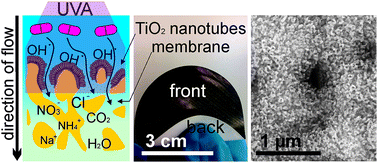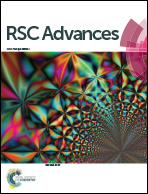Photocatalytic degradation and toxicity evaluation of diclofenac by nanotubular titanium dioxide–PES membrane in a static and continuous setup
Abstract
Diclofenac is a commonly used anti-inflammatory drug, which has been found in surface waters. Advanced oxidation processes (AOPs) seem to be the most suitable technique to prevent the entry of diclofenac and other pollutants into surface waters. TiO2 is especially reliable in mineralizing many organic molecules. The combination of TiO2 nanotubes with a polymer microfiltration membrane (polyethersulfone, PES) showed high photocatalytic activity by degrading diclofenac combined with an excellent membrane performance and long-term stability. By continuously degrading pollutants from water via a cross-flow setup, the molecules to be degraded are transported right to the membrane surface so that the overall reaction rate is increased. The toxicity of diclofenac was reduced by photocatalysis and photolysis; however, photocatalysis had greater impact. Moreover, the complete degradation of pollutants is very important to avoid highly toxic intermediate products.


 Please wait while we load your content...
Please wait while we load your content...